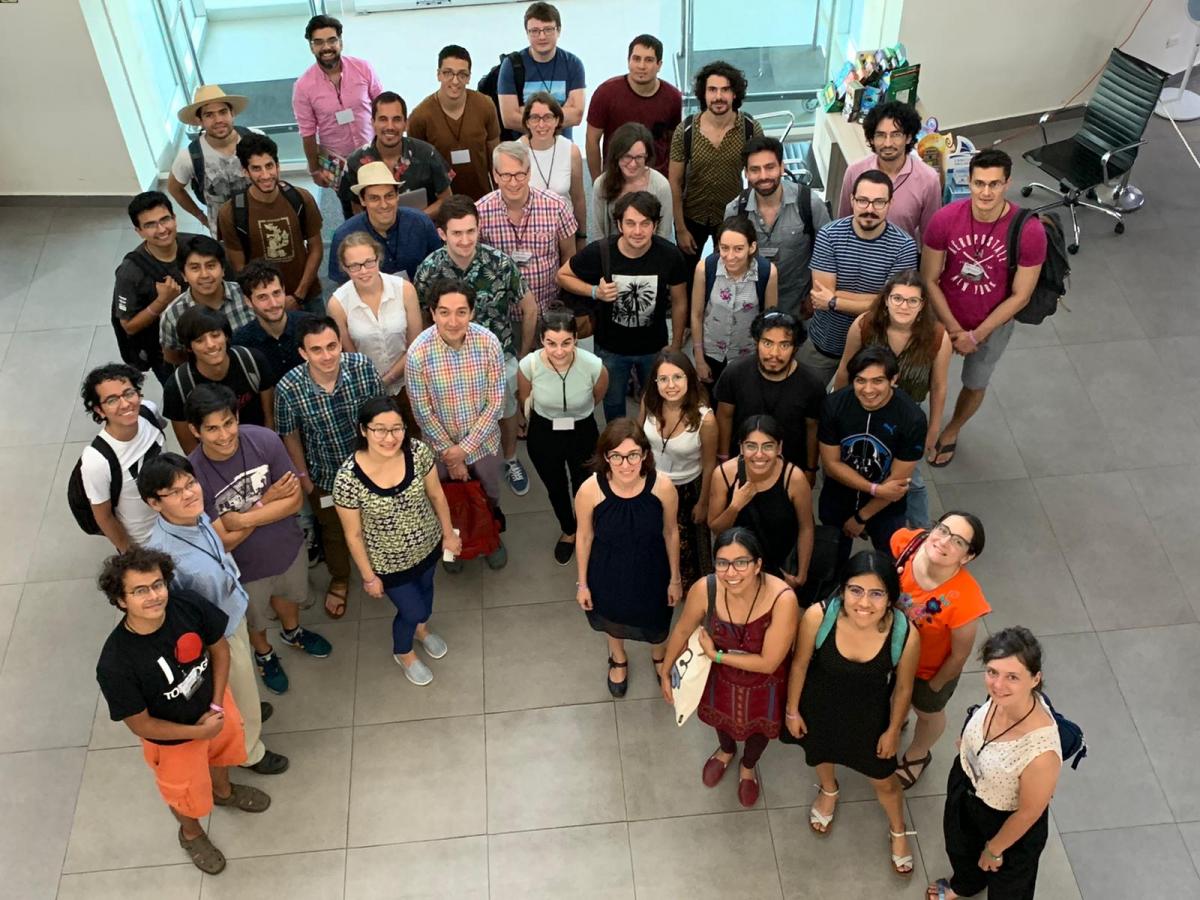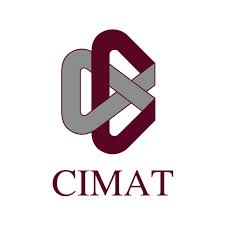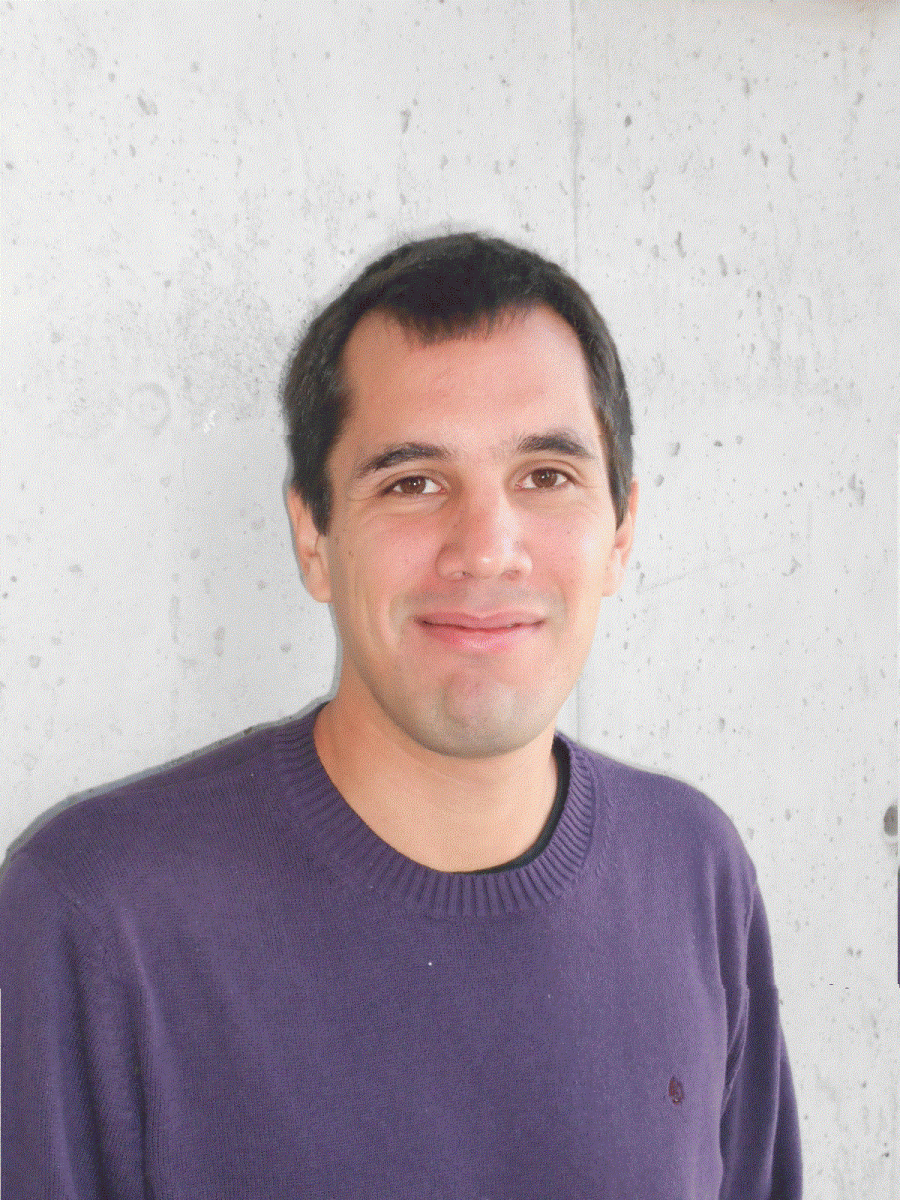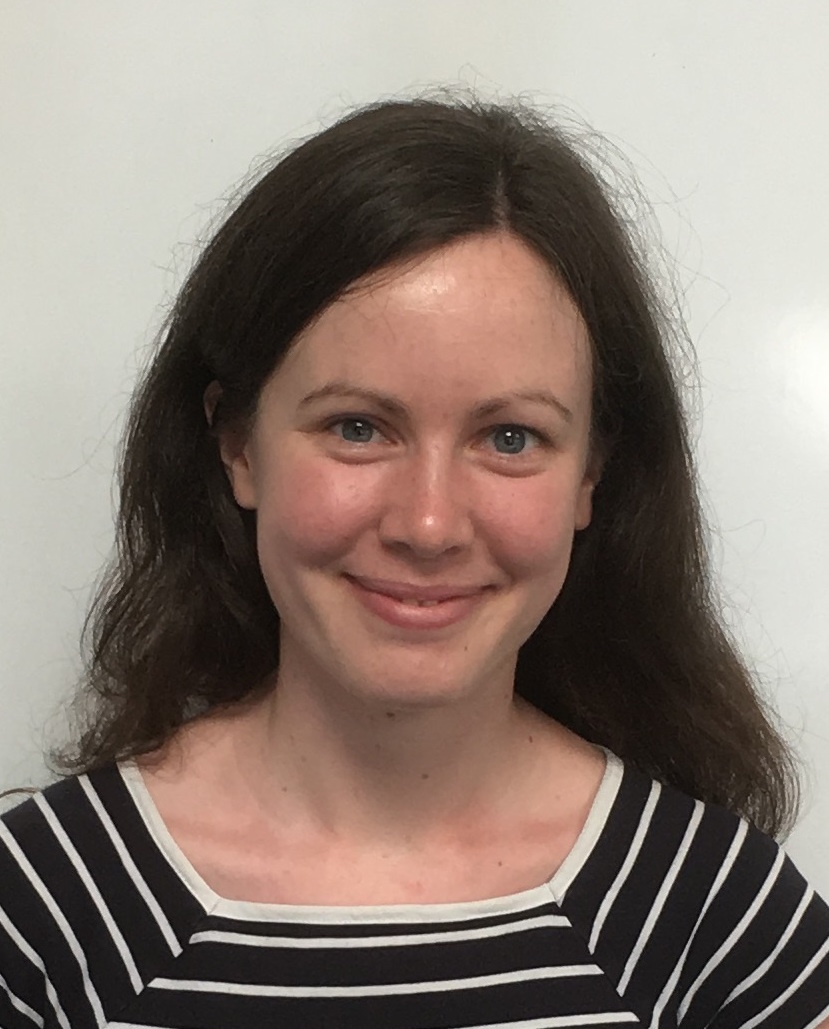

Juan Carlos Pardo (CIMAT, México)





|
Course
|
Title and Abstract
|
|
Manuel Cabezas
A
 |
Title: The ant in the labyrinth.
Abstract: The ant in the labyrinth is a term coined in 1976 by Pierre-Gilles de Gennes to refer to the simple random walk on a critical percolation cluster of $\mathbb{Z}^d$.
He proposed to study this model since it is the canonical example of diffusion in critical environments.
The goal of this mini-course is to present the history of this model and to communicate some of the recent progress towards understanding this model in the high-dimensional case. In particular, we will present a very detailed result obtained for the simple random walk on critical branching random walks in $\mathbb{Z}^d$. This simplified model is strongly believed to share a common scaling limit with the critical percolation case, a behaviour that is expected to be universal in high dimension.
Presenting this topic will lead us to discuss a wide variety of subjects: random walks in random environments, critical trees, critical graphs, the super-Brownian motion, etc.
|
|
Laura Eslava
B
 |
Title: The differential equation method and applications
Abstract: The differential equation method was pioneered around 1970 and it made its way through continuous-time Markov chains, foundations in computer science until its popularization in the analysis of randomized combinatorial algorithms by Wormald in the 1990’s.
Under certain natural conditions, the differential equation method provides approximations for fundamental features of discrete-time random processes. More precisely, it approximates the trajectories of several random variables of the random processes using the solution of differential equations that idealize the expected one-step changes of such variables.
In this mini-course, we will start with a review of applications of the simpler tool of the bounded differences method. Then present a simple proof of the differential equation method and overview several applications to the triangle-free process and the graph process with bounded degrees.
|
|
Sarah Penington
C
 |
Title: The Fisher-KPP equation and related topics
Abstract: The Fisher-KPP equation was introduced in 1937 by Fisher and by Kolmogorov, Petrovskii and Piskunov to model the spatial spread of an advantageous trait in a population. It turns out that solutions of this partial differential equation (PDE) can be represented in terms of a stochastic process, branching Brownian motion. In 1983, Bramson used probabilistic representations of the Fisher-KPP equation to prove a celebrated result about the front location in solutions of the PDE. I will introduce these probabilistic representations and give a sketch of a proof of Bramson’s result, and then talk about some related situations in which probabilistic techniques can be used to understand the behaviour of solutions of PDEs. |
|
Thursday
|
|
|
08:30-09:30
|
Breakfast
|
|
09:30-10:30
|
A
|
|
10:30-11:30
|
B
|
|
11:30-12:00
|
Coffee
|
|
12:00-13:00
|
C
|
|
13:00-14:30
|
Lunch
|
|
14:30-15:00
|
Sandra Palau (UNAM)
Title: Behaviour of supercritical multi-type continuous state branching processes with immigration.
Abstract: For multi-type continuous state branching processes with immigration,under mild conditions, there exists a lead eigenvalue which characterises the spectral radius of the linear semigroup associated. If the eigenvalue is positive, the value gives the precise almost sure rate of growth of each type. Moreover, in the limit, the proportion of mass of each type is given by the left lead eigenvector.The projection of this limit on any other right eigenvector of the linear semigrup is vanishing. Then, we provided the correct exponential growth.
|
|
15:00-15:30
|
Isaac Gonzalez (Bath)
Title: Branching Brownian motion on the sphere
Abstract: Motivated by toy models for real-life scenarios, the aim is to look at studying types of branching processes which live on the surface of the sphere. We want to examine how the process fills space (i.e. the surface of the sphere) with time.
We propose to consider the setting of branching Brownian motion (BBM) on the surface of the sphere. The natural way to describe it is to describe the evolution of particles in a regular BBM on $R^d$ and write their spatial positions in terms of a skew product. That is to say, identifying the process in generalised polar coordinates rather than cartesian coordinates. Roughly speaking, up to a time change, considering only the component $x/|x|^2$ of each particle $x$ in the system thus produces a BBM on the surface of a d dimensional sphere.
In this talk we will discuss some of the known results related to the probability of survival of a BBM in the super-critical, critical and sub-critical cases and examining some of their asymptotic properties. Then the connection with the process on the sphere becomes apparent when we use the skew product decomposition. In particular, a d-dimensional Brownian motion surviving in the cone (generated by the domain $D$) clearly translates (on considering the argument of the Brownian motion) to surviving in a sub-domain for a Brownian motion on the unit sphere.
|
|
15:30-16:00
|
Natalia Cardona (CIMAT) Title: Extinction rates for branching processes in a Lévy environment: the subcritical regime Abstract: In this talk, we study the extinction rates for continuous state branching processes in a Lévy environment, when the associated Lévy process drifts to minus infinity. Our results generalises those obtained (independently) by Li and Xu (2018) and Palau et al. (2016), where the case when the branching mechanism is stable was studied. Our methodology focuses on the description of the process under the survival event which is closely associated to understanding continuous state branching processes in a random environment which is conditioned to be positive. |
|
16:00-18:00
|
Discussion
|
|
Friday
|
|
|
08:30-09:30
|
Breakfast
|
|
09:30-10:30
|
C
|
|
10:30-11:30
|
A
|
|
11:30-12:00
|
Coffee
|
|
12:00-13:00
|
B
|
|
13:00-14:30
|
Lunch
|
|
14:30-15:00
|
Tsogzolmaa Saizmaa
Title: Attraction to and repulsion from a subset of the unit sphere for isotropic stable L´evy processes
Abstract: Suppose that Ω is a region of the unit sphere. We construct d-dimensional isotropic stable Levy processes conditioned to approach Ω continuously from either inside or outside of the sphere. Additionally, we show that these processes are in duality with the stable process conditioned to remain inside the sphere and absorb continuously at the origin and to remain outside of the sphere, respectively. Our results extend the recent contributions of Doering, L. and Weissman, P. (2018), where similar conditioning is considered, albeit in one dimension. Joint work with Andreas Kyprianou and Sandra Palau. |
|
15:00-15:30
|
Adrian Casanova (UNAM)
Title: The Discreet Ancestral Selection Graph
Abstract: We will study the effect of selection in the evolution of the genetic profile of a population using a random graph with vertex set $\mathbb{Z}\times \{1,2,...,N\}$. In this model, the future and the past of the population are functionals of the Discreet Ancestral Selecion Graph (DASG) and this induces a duality relation betwen the ancestral process and the frequency process.In the case of two types of individuals, we will discuss a new proof of the Haldane formula for moderate selection. In the multiple types case, we introduce the concept of couloring a DASG and study its relation to complex selective interactions.
|
|
15:30-16:00
|
Maurico Duarte
Title: Where does that noise come from?
Abstract: In this talk we will introduce a two-parameter family for a discrete model of a particle constrained to $\mathbb{N}^2$ by exclusion. The jump rates depend on the position of the particle in such a way that the stationary distribution is the product of a Geometric and a Poisson RV with parameters depending explicitly on those of the discrete model.
By scaling and renormalizing these parameters, we obtain convergence to a reflected diffusion process that is driven by a one dimensional BM, but which still has a stationary distribution with a density in its whole state space. More interestingly, the component of this diffusion that is “noiseless” has a Gaussian (“noisy”) stationary marginal.
Most of our arguments are based on (sub)martingales techniques.
|
|
16:00-18:00
|
Discussion
|
|
Saturday
|
|
|
08:30-09:30
|
Breakfast
|
|
09:30-10:30
|
B
|
|
10:30-11:30
|
C
|
|
11:30-12:00
|
Coffee
|
|
12:00-13:00
|
A
|
|
13:00-14:30
|
Lunch
|
|
14:30-15:00
|
Emma Horton
Title: Stochastic Analysis of the Neutron Transport Equation Abstract: The neutron transport equation (NTE) describes the net movement of neutrons through an inhomogeneous fissile medium, such as a nuclear reactor. One way to derive the NTE is via the stochastic analysis of a spatial branching process. This approach has been known since the 1960/70s, however, since then, very little innovation in the literature has emerged through probabilistic analysis. In recent years, however, the nuclear power and nuclear regulatory industries have a greater need for a deep understanding the spectral properties of the NTE.
In this talk I will formally describe the dynamics of the so-called neutron branching process (NBP), along with an associated Feynman Kac representation. I will then discuss how the latter can be used to prove a Perron-Fr\"o benius-type decomposition of the expectation semigroup using quasi-stationary methods.
Joint work with Alex M. G. Cox, Simon C. Harris, Andreas E. Kyprianou, Denis Villemonais and Minmin Wang.
|
|
15:00-15:30
|
Claire Delplancke
Title: Berry-Esseen bounds for the χ2-distance in the Central Limit Theorem
Abstract: The main result of this work is a Berry-Esseen-like bound, which states the convergence to the normal distribution of sums of independent, identically distributed random variables in chisquare distance, defined as the variance of the density with respect to the normal distribution. Our main assumption is that the random variablesinvolved in the sum are independent and have polynomial density; the identical distribution hypothesis can in fact be relaxed. The method consists of taking advantage of the underlying time non-homogeneous Markovian structure and providing a Poincar ́e-like inequality for the non-reversible transition operator, which allows to find the optimal rate in the convergence
Joint work with Laurent Miclo.
|
|
15:30-16:00
|
Daniel Kious
Title: Random walk on the simple symmetric exclusion process
Abstract: In a joint work with Marcelo R. Hilário and Augusto Teixeira, we in- vestigate the long-term behavior of a random walker evolving on top of the simple symmetric exclusion process (SSEP) at equilibrium. At each jump, the random walker is subject to a drift that depends on whether it is sitting on top of a particle or a hole. The asymptotic behavior is expected to depend on the density ρ ∈ [0, 1] of the underlying SSEP. Our first result is a law of large numbers (LLN) for the random walker for all densities ρ except for at most two values ρ−, ρ+ ∈ [0, 1], where the speed (as a function fo the density) possibly jumps from, or to, 0. Second, we prove that, for any density corresponding to a non-zero speed regime, the fluctuations are diffusive and a Central Limit Theorem holds. For the special case in which the density is 1/2 and the jump distribution on an empty site and on an occupied site are symmetric to each other, we prove a LLN with zero limiting speed. Our main results extend to environments given by a family of independent simple symmetric random walks in equilibrium. |
|
16:00-18:00
|
Discussion |
|
Bath
|
CIMAT
|
UNAM
|
Other
|
Chile
|
|---|---|---|---|---|
|
Alex Cox
Andreas Kyprianou
Emma Horton
Isaac Gonzalez
Benjamin Dadoun
Sarah Penington
Tsogzolmaa Saizmaa
Daniel Kious
Martin Prigent
|
Juan Carlos Pardo
Natalia Cardona Tobón
Camilo González
Dante Mata
Jose de Jesus Contreras Arredondo
Hector Chang
Diego Castro
Arturo Arellano
Sebastian Hernandez
|
Sandra Palau Alejandro Santoyo Lizbeth Peñaloza Velasco
Alejandro Hernández Wences
Adrian Gonzalez Casanova
Marie Clara Fittipaldi
Laura Eslava
Geronimo Uribe
Osvaldo Angtuncio-Hernández
Miriam Ramírez García
Veronica Miro Pina
Sergio Lopez
|
Christina Goldschmidt (Oxford)
Janos Englander(Colorado) Fernando Cordero (Bielefeld)
Maite Wilke Berenguer (Bochum)
Simon Harris
(Auckland)
|
Joaquin Fontbona (CMM)
Manuel Cabezas (PUC)
Maurico Duarte (UNAB)
Roberto Cortez (CMM)
Claire Delplancke (CMM)
Elsa Cazelles (CMM)
Hector Olivero (UV)
Felipe Muñoz (CMM)
|
